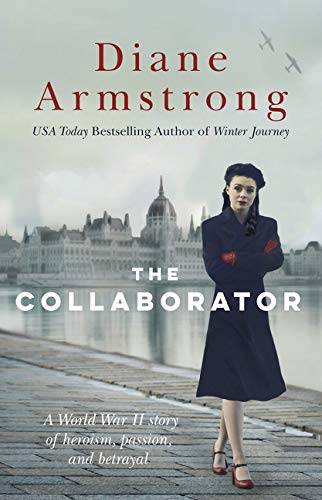The Collaborator
To paraphrase William Faulkner, World War II isn’t even past. In fiction and non-fiction, the fight goes on—perhaps especially fiercely at the present time because, as one character in The Collaborator observes, “Soon no peoples left to tell stories.”
A child Holocaust survivor herself, Diane Armstrong tells a compelling set of stories in this novel, which is set partly in 1944, partly from 1952 to 1957, and partly in 2005. Locations range from Australia to Hungary to Israel, and the narrative moves back and forth between two main characters: Annika Barnett, a Bridget Jones-like Australian journalist who’s floundering through a midlife identity crisis, and Miklos Nagy, a Hungarian Jew who may be either a Holocaust hero or a Nazi collaborator, or both. Originally inspired by a non-fictional and controversial Israeli case, Armstrong takes two apparently totally disconnected lives and weaves them together in an intricate historical design that enables her to tell touching human stories and also to explore serious philosophical issues such as the nature of goodness, evil, crime, guilt, forgiveness, and gratitude. Her references to Greek tragedy and Faust are not inappropriate.
Her own background as a journalist becomes apparent in the excellent research that lies behind the book. On one level it investigates (through travel, documents, and interviews) a mystery, which in the end is not so much solved as it is enlightened. Truth is in fact… a finely shaded gray. Armstrong’s generally serviceable prose takes flight in her excellent descriptions of Budapest and Israel. And occasionally a truly wonderful word pops out—footy, fairy-floss, stringybark, journo, triffid, bludger, spruik—to remind a delighted reader of the many saucy, salty glories that Australia has sprinkled on the English language.










